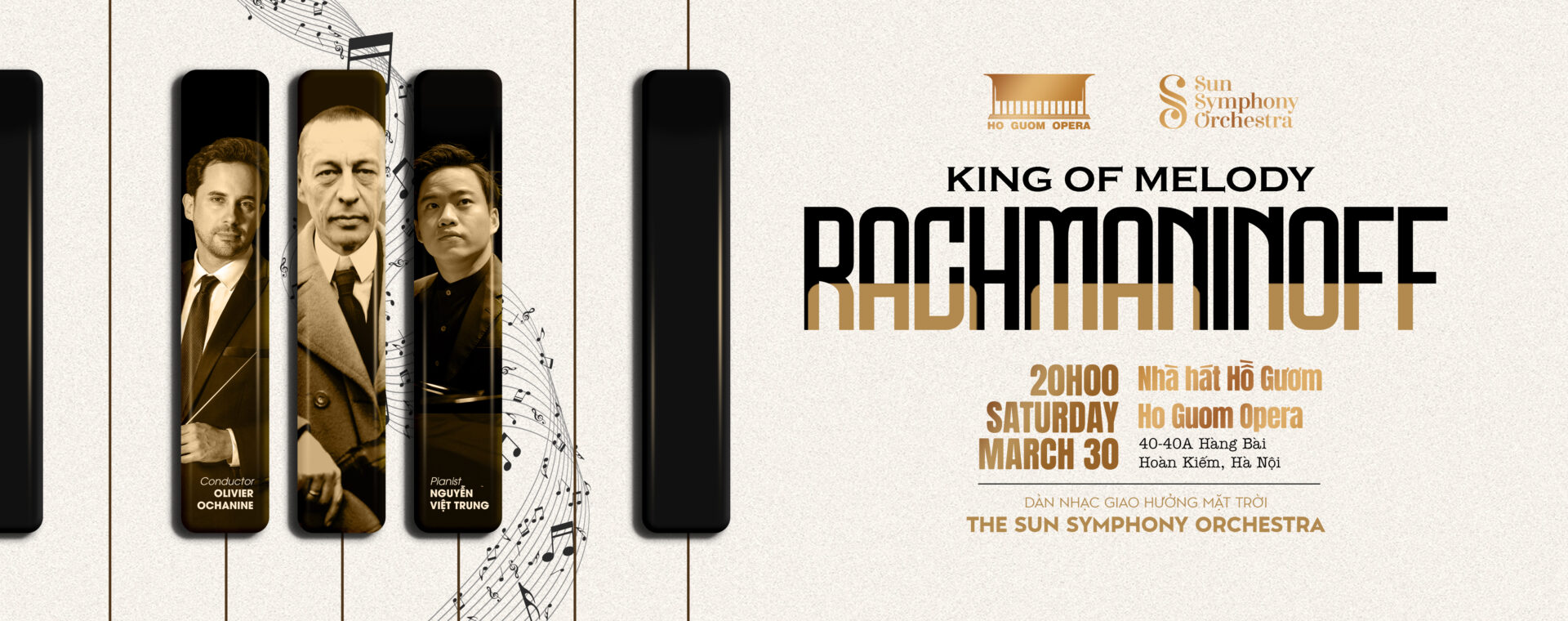Short description
For the very first time in Vietnam, beloved composer Sergei Rachmaninoff’s very first symphony will be spotlighted this Saturday with the Sun Symphony Orchestra. The Symphony has in recent times become much more successful, and would probably have made its composer proud.
RACHMANINOFF
Rhapsody on a theme of Paganini (Pianist: Nguyễn Việt Trung)
RACHMANINOFF
Symphony no. 1 in D minor (Vietnam Premiere)
Shortly before his death, composer Sergei Rachmaninoff summed up his life by saying: “In my own compositions, no conscious effort has been made to be original, or Romantic, or Nationalistic, or anything else. I write down on paper the music I hear within me, as naturally as possible. I am a Russian composer, and the land of my birth has influenced my temperament and outlook. My music is the product of my temperament, and so it is Russian music…. I have been strongly influenced by Tchaikovsky and Rimsky-Korsakov; but I have never, to the best of my knowledge, imitated anyone. What I try to do when writing down my music, is to make it say simply and directly that which is in my heart when I am composing. If there is love there, or bitterness, or sadness, or religion, these moods become part of my music, and it becomes either beautiful or bitter or sad or religious.”
The King of Melody, as we like to think of him, expressed in his compositions some of the most poignant feelings ever put into music. For this week’s concert, we feature one of his early works – the very first symphony – and one of his later works which followed some decades of fame and success – his Rhapsody on a Theme of Paganini.
Having achieved great success as a pianist, it is no surprise that much of Rachmaninoff’s compositional output revolves around the piano. With four concertos, loads of solo piano works and chamber music, one sees how deeply the piano figured in Rachmaninoff’s musical mind. The Rhapsody does what many works have done, which is to use the last 24 caprices of Niccolò Paganini as a jumping board from which to write inventive variations. Rachmaninoff’s own creation takes the variations and adds a clear orchestral Rachmaninoff signature, with colors we have come to expect from his characteristic compositions.
An element which ties both the Rhapsody and the Symphony No. 1 is the famous “Dies Irae”, the medieval liturgical theme that is so prominently used by composers from Berlioz to Liszt and Tchaikovsky. Rachmaninoff includes elements in Paganini’s life such as his exploitative relationships with women, as well as the scary demonic association. “All the variations which have the Dies Irae theme represent the evil spirit…Paganini himself appears in the theme,” he claims. During the 19th Century, the dark Dies Irae theme had become not only a “death theme” but an idea which represented the supernatural. The pairing of this element with the Paganini theme iterated at the beginning is a fascinating combination which lends itself to great possibilities of contrasting moods.
